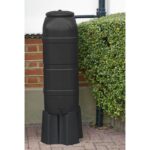In the realm of sustainable drainage systems (SuDS), innovative solutions are constantly sought to manage stormwater runoff effectively while minimizing environmental impact. One such solution gaining traction is the utilization of vortex flow control devices. These devices, strategically positioned downstream of attenuation tanks, offer a myriad of benefits, ranging from efficient discharge reduction to mitigating blockage risks.
At the heart of a vortex flow control device lies its ability to initiate a passive vortex within its body, thereby limiting the outgoing flow. Unlike traditional methods such as equivalent diameter orifice control, vortex devices achieve a notable reduction in discharge rates while offering the flexibility of accommodating larger inlets. This versatility translates into a reduced risk of blockage, a common concern in drainage systems.
The advantages of utilizing a vortex device extend beyond mere flow regulation. Consider the intriguing Head-Discharge (Q-h) relationship inherent to vortex development. As stormwater enters the system, various phases unfold, starting with open channel flow and transitioning through orifice control before culminating in fully established vortex flow. This unique curve demonstrates that, on average, vortex devices outperform orifices across a range of head levels, resulting in higher average flows. Consequently, the required upstream storage volume can be significantly reduced when employing vortex flow control, offering operational efficiencies and cost savings.
Implementation options for vortex devices within SuDS systems are diverse. While they can be attached to the headwall of SuDS basins, a more common approach involves installation inside a chamber downstream of attenuation tanks or crate systems. This placement ensures seamless integration with existing infrastructure while maximizing the benefits of vortex technology.
The environmental implications of adopting vortex flow control in SuDS are profound. By efficiently managing stormwater runoff, these devices contribute to flood risk mitigation and safeguarding water quality. Moreover, the reduction in upstream storage requirements minimizes land usage, preserving green spaces and promoting sustainable urban development.
Furthermore, the inherent simplicity of vortex flow control devices translates into lower maintenance needs and operational costs compared to conventional alternatives. With fewer moving parts and reliance on passive vortex formation, these devices offer long-term reliability and resilience in demanding drainage scenarios.
In addition to their functional benefits, vortex flow control devices embody a commitment to sustainability and innovation in urban water management. By harnessing natural hydrodynamic principles, these devices represent a harmonious fusion of engineering prowess and environmental stewardship.
Looking ahead, the widespread adoption of vortex flow control in SuDS holds promise for addressing the growing challenges posed by urbanization and climate change. As cities grapple with increasingly intense rainfall events, the need for robust stormwater management solutions becomes ever more pressing. In this context, vortex flow control emerges as a beacon of ingenuity, offering a path towards more resilient and sustainable urban landscapes.
In conclusion, vortex flow control devices exemplify the marriage of cutting-edge technology and ecological sensitivity in SuDS design. By optimizing flow regulation, reducing blockage risks, and enhancing system efficiency, these devices pave the way for a greener, more resilient urban future. As we navigate the complexities of urban water management, embracing the potential of vortex technology promises to unlock new frontiers in sustainable drainage systems

